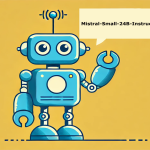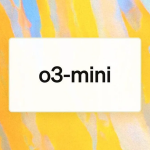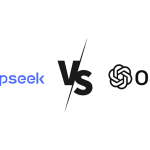All-in-One AI Model Comparison: GPT-4o, Llama 3, Gemini, Claude in a Single Table
In the dynamic world of artificial intelligence, 2024 has brought significant advancements and new competitors in the field of AI language models. Among these, models such as GPT-4o, Gemini 1.5 Pro, Claude 3.5 Sonnet, and others have emerged as frontrunners. This article delves into a detailed comparison of these leading AI models, highlighting their unique features, performance metrics, and ideal applications.
As artificial intelligence continues to evolve, the race to develop the most powerful and efficient AI models intensifies. Companies like OpenAI, Google, Meta, and Anthropic are at the forefront of this innovation, each offering models with distinct capabilities. Understanding the strengths and weaknesses of these models is crucial for businesses and developers aiming to integrate AI into their operations. This article will provide an in-depth analysis of the top AI models of 2024, based on quality, output speed, latency, price, and context window size.

Quality of AI Models
Top Performers in Quality
The quality of an artificial intelligence model is a critical metric, reflecting its accuracy, reliability, and overall performance in generating human-like text. In 2024, the models leading in quality are OpenAI’s GPT-4o and Anthropic’s Claude 3.5 Sonnet. Both models have been recognized for their superior performance in understanding and generating coherent and contextually relevant responses. Following closely are Google’s Gemini 1.5 Pro and OpenAI’s GPT-4 Turbo, which also deliver high-quality outputs suitable for a wide range of applications.
Output Speed (Tokens/s)
Fastest Models
When it comes to output speed, Google’s models stand out. The Gemini 7B, with an impressive speed of 224 tokens per second, and Gemini 1.5 Flash, at 158 tokens per second, are the fastest models available. These models are particularly advantageous for applications requiring rapid response times and high throughput. Additionally, the Gemini 2 (9B) and Claude 3 Haiku also offer competitive speeds, making them suitable for real-time applications.
Latency (Seconds)
Models with Lowest Latency
Low latency is essential for applications that demand quick responses. The models with the lowest latency in 2024 are Mistral 7B and Mixtral 8x22B, with response times of 0.27 seconds and 0.28 seconds, respectively. These models are followed by Gemini 2 (9B) and Gemini 7B, which also offer low latency, making them ideal for interactive applications such as chatbots and virtual assistants.
Price per Million Tokens
Most Cost-Effective Models
Cost is a significant factor for businesses when selecting an AI model. The most cost-effective models in 2024 are OpenChat 3.5 and Gemini 7B, priced at $0.14 and $0.15 per million tokens, respectively. These models provide a balance between cost and performance, making them accessible for a broader range of applications. Other affordable options include Llama 3 (8B) and DeepSeek-V2, which also offer competitive pricing.
Context Window Size
Largest Context Windows
The size of the context window determines how much information an AI model can process at once, which is crucial for maintaining coherence in long conversations. Google’s Gemini 1.5 Pro and Gemini 1.5 Flash, with context windows of 1 million tokens, offer the largest capacities. These models are followed by Jamba Instruct and Claude 3.5 Sonnet, making them suitable for applications that require handling extensive data or long-form content generation.
AI Models at a Glance
| Model | Creator | Context Window | Quality Index | Price (Blended) | Output Tokens/s (Median) | Latency (Median) | Further Analysis |
|---|---|---|---|---|---|---|---|
| GPT-4o | OpenAI | 128k | 100 | $7.50 | 86.6 | 0.56 | Model |
| GPT-4 Turbo | OpenAI | 128k | 94 | $15.00 | 28.7 | 0.61 | Model |
| GPT-4 | OpenAI | 8k | 84 | $37.50 | 23.3 | 0.68 | Model |
| GPT-3.5 Turbo Instruct | OpenAI | 4k | 60 | $1.63 | 108.8 | 0.58 | Model |
| GPT-3.5 Turbo | OpenAI | 16k | 59 | $0.75 | 66.9 | 0.35 | Model |
| Gemini 1.5 Pro | 1m | 95 | $5.25 | 62.2 | 1.14 | Model | |
| Gemini 1.5 Flash | 1m | 84 | $0.53 | 157.8 | 1.13 | Model | |
| Gemma 2 (9B) | 8k | 71 | $0.20 | 137.6 | 0.29 | Model | |
| Gemini 1.0 Pro | 33k | 62 | $0.75 | 88.8 | 2.15 | Model | |
| Gemma 7B | 8k | 45 | $0.15 | 224.3 | 0.30 | Model | |
| Llama 3 (70B) | Meta | 8k | 83 | $0.90 | 50.9 | 0.43 | Model |
| Llama 3 (8B) | Meta | 8k | 64 | $0.17 | 119.8 | 0.31 | Model |
| Llama 2 Chat (70B) | Meta | 4k | 57 | $1.00 | 52.2 | 0.51 | Model |
| Llama 2 Chat (13B) | Meta | 4k | 39 | $0.25 | 83.4 | 0.37 | Model |
| Code Llama (70B) | Meta | 16k | 34 | $0.90 | 31.3 | 0.50 | Model |
| Llama 2 Chat (7B) | Meta | 4k | 29 | $0.20 | 91.5 | 0.68 | Model |
| Mistral Large | Mistral | 33k | 76 | $6.00 | 33.3 | 0.51 | Model |
| Mixtral 8x22B | Mistral | 65k | 71 | $1.20 | 66.7 | 0.28 | Model |
| Mistral Small | Mistral | 33k | 71 | $1.50 | 56.6 | 0.95 | Model |
| Mistral Medium | Mistral | 33k | 70 | $4.05 | 37.9 | 0.61 | Model |
| Mixtral 8x7B | Mistral | 33k | 61 | $0.50 | 89.9 | 0.34 | Model |
| Mistral 7B | Mistral | 33k | 40 | $0.18 | 108.5 | 0.27 | Model |
| Claude 3.5 Sonnet | Anthropic | 200k | 98 | $6.00 | 79.7 | 0.86 | Model |
| Claude 3 Opus | Anthropic | 200k | 93 | $30.00 | 24.1 | 1.91 | Model |
| Claude 3 Sonnet | Anthropic | 200k | 80 | $6.00 | 56.6 | 0.92 | Model |
| Claude 3 Haiku | Anthropic | 200k | 74 | $0.50 | 120.0 | 0.52 | Model |
| Claude 2.0 | Anthropic | 100k | 70 | $12.00 | 39.2 | 1.21 | Model |
| Claude Instant | Anthropic | 100k | 63 | $1.20 | 88.5 | 0.56 | Model |
| Claude 2.1 | Anthropic | 200k | 55 | $12.00 | 37.3 | 1.39 | Model |
| Command Light | Cohere | 4k | N/A | $0.38 | 37.6 | 0.41 | Model |
| Command | Cohere | 4k | N/A | $1.44 | 23.9 | 0.56 | Model |
| Command-R+ | Cohere | 128k | 75 | $6.00 | 59.1 | 0.45 | Model |
| Command-R | Cohere | 128k | 63 | $0.75 | 77.2 | 0.40 | Model |
| OpenChat 3.5 | OpenChat | 8k | 50 | $0.14 | 70.4 | 0.32 | Model |
Conclusion
The AI landscape in 2024 is marked by significant advancements and diverse offerings from leading technology companies. OpenAI’s GPT-4o and Claude 3.5 Sonnet lead in quality, while Google’s Gemini series dominates in output speed and context window size. Mistral and Mixtral models offer the lowest latency, making them ideal for real-time applications. For cost-sensitive projects, OpenChat 3.5 and Gemini 7B provide excellent value.
Choosing the right AI model depends on the specific needs and priorities of your application. Whether it’s high quality, speed, low latency, cost-efficiency, or large context windows, the models discussed in this article offer various strengths to meet diverse requirements. By understanding these differences, businesses and developers can make informed decisions to leverage AI technology effectively.
For More In-Depth Analysis
If you’re interested in a more detailed and comprehensive analysis of these AI models, please visit our in-depth review. Click HERE to explore further insights and data on GPT-4o, Llama 3, Gemini, Claude, and more.





